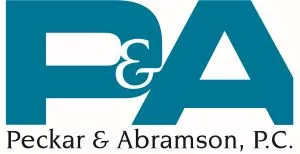The motion in limine is a critical weapon for the attorney defending a client against employment discrimination claims. Trial is won or lost based on the evidence that the jury sees and hears, so properly limiting that evidence can determine the trial's outcome before the jury is even empaneled. This article provides an overview of the most important motions in limine defense counsel should consider. Because discovery lays the groundwork for the motion in limine, this list also provides guidance for discovery that should be pursued to support exclusion of certain evidence.
1. Reasonable Cause Determinations and Materials Submitted During EEOC Investigations
We have previously written on the thicket of evidentiary arguments regarding admissibility of reasonable cause determinations by the Equal Employment Opportunity Commission (EEOC or Commission) and admissibility of statements and other materials gathered during EEOC investigations. Because of the complexity of this topic, the reader is invited to review The Evidentiary Impact of EEOC Reasonable Cause Determinations, DRI In-House Defense Quarterly, Summer 2014, for a more thorough treatment of these issues, including a detailed table of cases by jurisdiction.
The standards applied by the courts in determining admissibility in these cases are inconsistent from jurisdiction to jurisdiction, and in some cases appear little more than whimsical. As the EEOC is reporting a backlog of charges, a need for additional investigators, and a shortage of funding, challenging the admissibility of reasonable cause determinations—at trial and on consideration of summary judgment—may be even more important.
Employers facing EEOC charges must take the investigatory process seriously and remain mindful of the lasting effects of a reasonable cause finding. If the EEOC determines that reasonable cause exists to believe discrimination occurred (and the conciliation process is unsuccessful), defense counsel must develop and implement a plan to exclude that finding from evidence—or at least, minimize its impact on the jury. The above-referenced article provides ample materials to consider in developing a plan, as well as case law that may be helpful in preparing a motion in limine.
One recent opinion from a federal district court in the Fifth Circuit provides detailed analysis of the rationale for determining admissibility of a reasonable cause determination. In Nuccio v. Shell Pipeline Co., L.P., 506 F. Supp. 3d 382 (E.D. La. 2020), Shell moved for exclusion under Federal Rule of Evidence (FRE) 403, arguing that the reasonable cause finding was based on numerous factual and legal errors. The plaintiff argued that the finding was admissible under the public records exception to the hearsay rule. The trial court ruled that the reasonable cause finding was inadmissible. Nuccio demonstrates that a defense attorney need not sit back and allow an EEOC finding to be presented to the jury and to give the imprimatur of government approval on a plaintiff's case where that finding contains misstatements of fact or law.
2. "Me Too" Evidence
If you have defended claims of harassment or discrimination in the workplace, you have likely encountered the vexing problem of a plaintiff who seeks to broaden the scope of discovery to include allegations of discrimination by non-plaintiff coworkers. This is colloquially referred to by some courts as "me too" evidence, another topic on which we have written extensively. "Me Too" Evidence in Employment Cases, For The Defense, January 2017 offers an extensive treatment of this evidentiary topic and a detailed description of the leading cases.
Defense counsel can limit admissibility of "me too" evidence if they have laid the groundwork to exclude it in discovery. If counsel can show that these other acts were not or could not have been known to a plaintiff, or are otherwise irrelevant to plaintiff's claims, a motion to exclude based on FRE 403 will be successful. Even if relevant, evidence can be excluded if its "probative value is substantially outweighed by a danger of ... unfair prejudice, confusing the issues, misleading the jury, undue delay, wasting time, or needlessly presenting cumulative evidence." Rule 403's balancing test supports the exclusion of evidence that will lead to trial of a "case within a case" and otherwise protracted proceedings that distract the jury from the core issues.
3. Speculative Front-Pay Claims
Damages claims for front pay can be particularly difficult to address, even though they generally have the least evidentiary support. Like claims for backpay, frontpay claims tend to escalate with the costs of discovery as a case slowly winds its way through the court system, particularly if the plaintiff feels more emboldened. Because front-pay damages are equitable and inherently speculative, this is an area ripe for a motion in limine.
The need to exclude evidentiary support for front-pay damages may be more urgent in those jurisdictions where the jury and not the judge decides the amount of any front-pay award. In some states, the jury determines whether the plaintiff is entitled to any front pay and, if the answer is affirmative, the amount of front pay.
Even in federal court, the circuits are split on whether the issue of quantifying front pay goes to the jury. The Eighth and Ninth Circuits have held that front pay is a wholly equitable remedy, distinct from other compensatory damages and more appropriately awarded by a judge. See Newhouse v. McCormick & Co., Inc., 110 F.3d 635, 641 (8th Cir. 1997); Traxler v. Mutnomah Cty., 596 F.3d 1007, 1012 (9th Cir. 2010); accord Dominic v. Consolidated Edison Co., 822 F.2d 1249, 1257 (2d Cir. 1987) (award of front pay should be made by the court); Goldstein v. Manhattan Indus., Inc., 758 F.2d 1435, 1449 (11th Cir. 1985) (finding that selection of remedies is discretionary with the district court).
Other circuits put more discretion in the hands of the jury. See Cummings v. Standard Register Co., 265 F.3d 56, 66 (1stCir. 2001) (affirming 14-year front-pay claim in age discrimination case and noting that the issue is for the jury); Maxfield v. Sinclair Int'l, 766 F.2d 788, 796 (3d Cir. 1985) (holding that amount of front-pay damages is a fact question for the jury); accord Hansard v. Pepsi-Cola Metro Bottling Co., 865 F.2d 1461, 1470 (5th Cir. 1989); see also Coston v. Plitt Theatres, Inc., 831 F.2d 1321, 1333 n.4 (7th Cir. 1987) (stating that authority and reason suggest that amount of front pay is a jury question), vacated on other grounds, 486 U.S. 1020 (1988).
To view the full article click here
The content of this article is intended to provide a general guide to the subject matter. Specialist advice should be sought about your specific circumstances.



